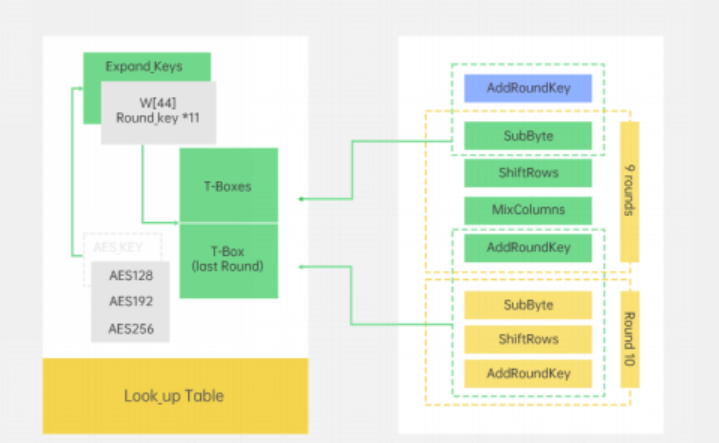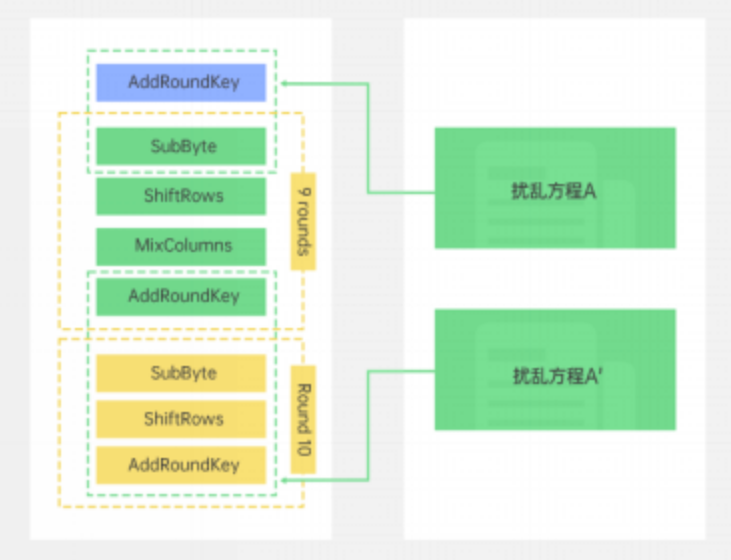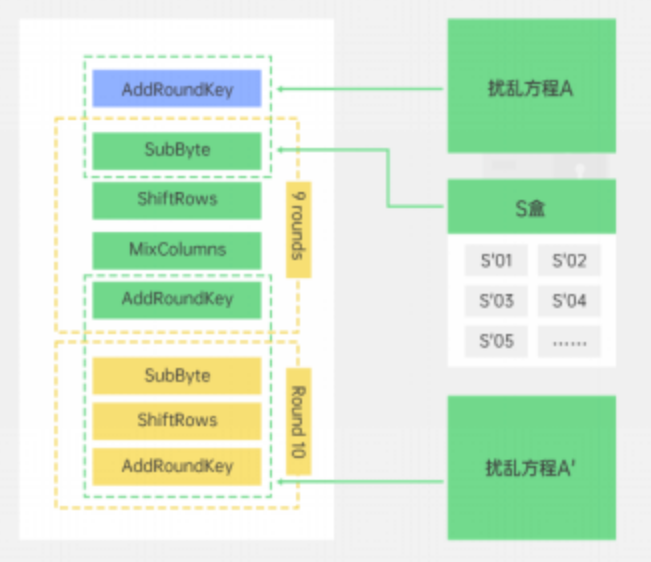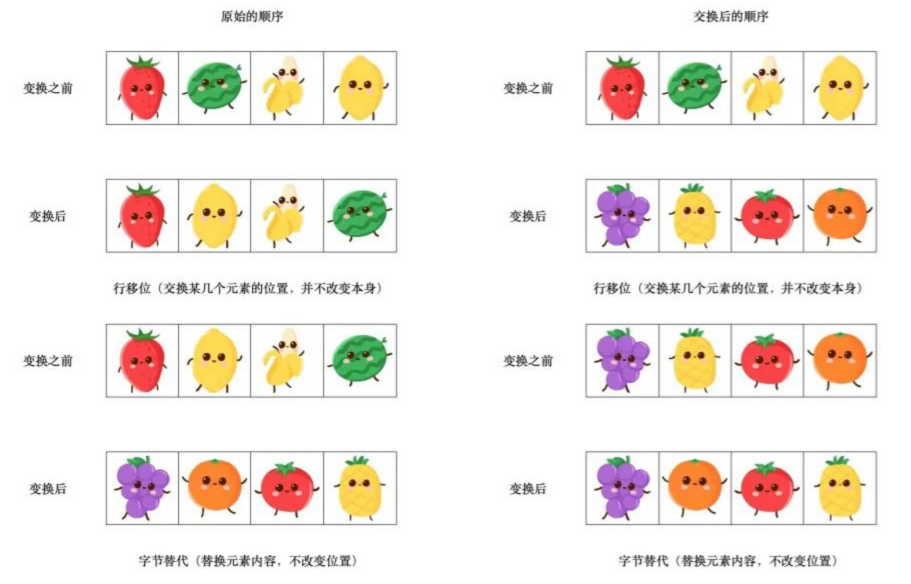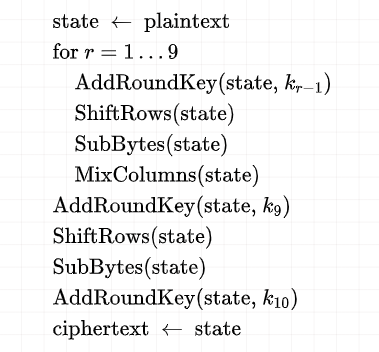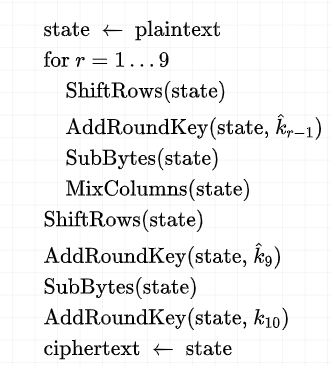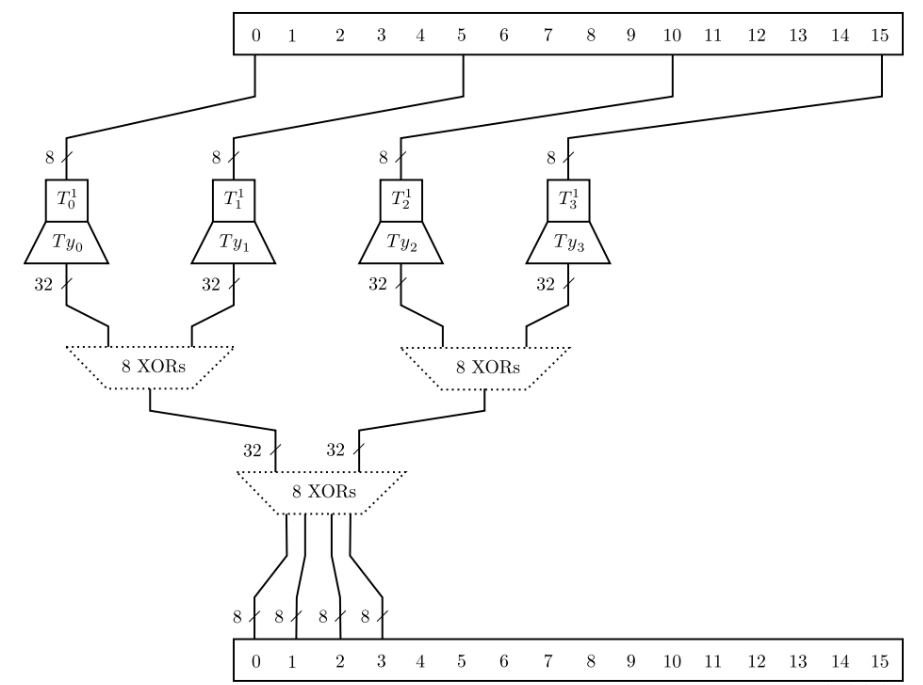1
2
3
4
5
6
7
8
9
10
11
12
13
14
15
16
17
18
19
20
21
22
23
24
25
26
27
28
29
30
31
32
33
34
35
36
37
38
39
40
41
42
43
44
45
46
47
48
49
50
51
52
53
54
55
56
57
58
59
60
61
62
63
64
65
66
67
68
69
70
71
72
73
74
75
76
77
78
79
80
81
82
83
84
85
86
87
88
89
90
91
92
93
94
95
96
97
98
99
100
101
102
103
104
105
106
107
108
109
110
111
112
113
114
115
116
117
118
119
120
121
122
123
124
125
126
127
128
129
130
131
132
133
134
135
136
137
138
139
140
141
142
143
144
145
146
147
148
149
150
151
152
153
154
155
156
157
158
159
160
161
162
163
164
165
166
167
168
169
170
171
172
173
174
175
176
177
178
179
180
181
182
183
184
185
186
187
188
189
190
191
192
193
194
195
196
197
198
199
200
201
202
203
204
205
206
207
208
209
210
211
212
213
214
215
216
217
218
219
220
221
222
223
224
225
226
227
228
229
230
231
232
233
234
235
236
237
238
239
240
241
242
243
244
245
246
247
248
249
250
251
252
253
254
255
256
257
258
259
260
261
262
263
264
265
266
267
268
269
270
271
272
273
274
275
276
277
278
279
280
281
282
283
284
285
286
287
288
289
290
291
292
293
294
295
296
297
298
299
300
301
302
303
304
305
306
307
308
309
310
311
312
313
314
315
316
317
318
319
320
321
322
323
324
325
326
327
328
329
330
331
332
333
334
335
336
337
338
339
340
341
342
343
344
345
346
347
348
349
350
351
352
353
354
355
356
357
358
359
360
361
362
363
364
365
366
367
368
369
370
371
372
373
374
375
376
377
378
379
| #include <iostream>
#include <NTL/mat_GF2.h>
#include "log.h"
constexpr uint8_t SBOX[16][16] = {
{0x63, 0x7c, 0x77, 0x7b, 0xf2, 0x6b, 0x6f, 0xc5, 0x30, 0x01, 0x67, 0x2b, 0xfe, 0xd7, 0xab, 0x76},
{0xca, 0x82, 0xc9, 0x7d, 0xfa, 0x59, 0x47, 0xf0, 0xad, 0xd4, 0xa2, 0xaf, 0x9c, 0xa4, 0x72, 0xc0},
{0xb7, 0xfd, 0x93, 0x26, 0x36, 0x3f, 0xf7, 0xcc, 0x34, 0xa5, 0xe5, 0xf1, 0x71, 0xd8, 0x31, 0x15},
{0x04, 0xc7, 0x23, 0xc3, 0x18, 0x96, 0x05, 0x9a, 0x07, 0x12, 0x80, 0xe2, 0xeb, 0x27, 0xb2, 0x75},
{0x09, 0x83, 0x2c, 0x1a, 0x1b, 0x6e, 0x5a, 0xa0, 0x52, 0x3b, 0xd6, 0xb3, 0x29, 0xe3, 0x2f, 0x84},
{0x53, 0xd1, 0x00, 0xed, 0x20, 0xfc, 0xb1, 0x5b, 0x6a, 0xcb, 0xbe, 0x39, 0x4a, 0x4c, 0x58, 0xcf},
{0xd0, 0xef, 0xaa, 0xfb, 0x43, 0x4d, 0x33, 0x85, 0x45, 0xf9, 0x02, 0x7f, 0x50, 0x3c, 0x9f, 0xa8},
{0x51, 0xa3, 0x40, 0x8f, 0x92, 0x9d, 0x38, 0xf5, 0xbc, 0xb6, 0xda, 0x21, 0x10, 0xff, 0xf3, 0xd2},
{0xcd, 0x0c, 0x13, 0xec, 0x5f, 0x97, 0x44, 0x17, 0xc4, 0xa7, 0x7e, 0x3d, 0x64, 0x5d, 0x19, 0x73},
{0x60, 0x81, 0x4f, 0xdc, 0x22, 0x2a, 0x90, 0x88, 0x46, 0xee, 0xb8, 0x14, 0xde, 0x5e, 0x0b, 0xdb},
{0xe0, 0x32, 0x3a, 0x0a, 0x49, 0x06, 0x24, 0x5c, 0xc2, 0xd3, 0xac, 0x62, 0x91, 0x95, 0xe4, 0x79},
{0xe7, 0xc8, 0x37, 0x6d, 0x8d, 0xd5, 0x4e, 0xa9, 0x6c, 0x56, 0xf4, 0xea, 0x65, 0x7a, 0xae, 0x08},
{0xba, 0x78, 0x25, 0x2e, 0x1c, 0xa6, 0xb4, 0xc6, 0xe8, 0xdd, 0x74, 0x1f, 0x4b, 0xbd, 0x8b, 0x8a},
{0x70, 0x3e, 0xb5, 0x66, 0x48, 0x03, 0xf6, 0x0e, 0x61, 0x35, 0x57, 0xb9, 0x86, 0xc1, 0x1d, 0x9e},
{0xe1, 0xf8, 0x98, 0x11, 0x69, 0xd9, 0x8e, 0x94, 0x9b, 0x1e, 0x87, 0xe9, 0xce, 0x55, 0x28, 0xdf},
{0x8c, 0xa1, 0x89, 0x0d, 0xbf, 0xe6, 0x42, 0x68, 0x41, 0x99, 0x2d, 0x0f, 0xb0, 0x54, 0xbb, 0x16}
};
constexpr int SHIFT_ROWS_TAB[16] = {
0, 5, 10, 15,
4, 9, 14, 3,
8, 13, 2, 7,
12, 1, 6, 11,
};
constexpr int InvShiftRowsTab[16] = {
0, 13, 10, 7,
4, 1, 14, 11,
8, 5, 2, 15,
12, 9, 6, 3,
};
template<typename T>
inline NTL::vec_GF2 from_scalar(T in);
template<>
inline NTL::vec_GF2 from_scalar(uint8_t in) {
NTL::vec_GF2 result;
result.SetLength(8);
for (int i = 0; i < 8; i++) {
result[7 - i] = ((in >> i) & 1);
}
return result;
}
template<>
inline NTL::vec_GF2 from_scalar(uint32_t in) {
NTL::vec_GF2 result;
result.SetLength(32);
for (int i = 0; i < 32; i++) {
result[31 - i] = ((in >> i) & 1);
}
return result;
}
template<typename T>
inline T to_scalar(const NTL::vec_GF2 &in);
template<>
inline uint8_t to_scalar(const NTL::vec_GF2 &in) {
uint8_t result = 0;
for (int i = 0; i < 2; i++) {
long i0 = NTL::rep(in[i * 4 + 0]), i1 = NTL::rep(in[i * 4 + 1]),
i2 = NTL::rep(in[i * 4 + 2]), i3 = NTL::rep(in[i * 4 + 3]);
result = (result << 4) | (i0 << 3) | (i1 << 2) | (i2 << 1) | (i3 << 0);
}
return result;
}
template<>
inline uint32_t to_scalar(const NTL::vec_GF2 &in) {
uint32_t result = 0;
for (int i = 0; i < 8; i++) {
long i0 = NTL::rep(in[i * 4 + 0]), i1 = NTL::rep(in[i * 4 + 1]),
i2 = NTL::rep(in[i * 4 + 2]), i3 = NTL::rep(in[i * 4 + 3]);
result = (result << 4) | (i0 << 3) | (i1 << 2) | (i2 << 1) | (i3 << 0);
}
return result;
}
template<typename T>
inline T mul(const NTL::mat_GF2 &mat, T x) {
return to_scalar<T>(mat * from_scalar<T>(x));
}
NTL::mat_GF2 GenerateGF2RandomMatrix(int dimension) {
NTL::mat_GF2 mat(NTL::INIT_SIZE, dimension, dimension);
for (int i = 0; i < dimension; i++) {
for (int j = 0; j < dimension; j++) {
mat[i][j] = NTL::random_GF2();
}
}
return mat;
}
NTL::mat_GF2 GenerateRandomGF2InvertibleMatrix(int dimension) {
for (;;) {
NTL::mat_GF2 result = GenerateGF2RandomMatrix(dimension);
if (NTL::determinant(result) != 0)
return result;
}
}
inline void add_round_key(uint8_t state[16], const uint32_t round_key[4]) {
for (int i = 0; i < 4; i++)
for (int j = 0; j < 4; j++) {
state[i * 4 + j] ^= round_key[i] >> ((3 - j) * 8);
}
}
void add_round_key_after_shift(uint8_t state[16], const uint32_t round_key[4]) {
for (int i = 0; i < 4; ++i) {
for (int j = 0; j < 4; ++j) {
state[i * 4 + j] ^= round_key[(j + i) % 4] >> ((3 - j) * 8);
}
}
}
void sub_bytes(uint8_t state[16]) {
for (int i = 0; i < 4; ++i) {
for (int j = 0; j < 4; ++j) {
state[i * 4 + j] = SBOX[state[i * 4 + j] >> 4][state[i * 4 + j] & 0x0F];
}
}
}
void shift_rows(uint8_t state[16]) {
uint8_t shifts[16] = {
0, 5, 10, 15,
4, 9, 14, 3,
8, 13, 2, 7,
12, 1, 6, 11,
};
const uint8_t in[16] = {
state[0], state[1], state[2], state[3],
state[4], state[5], state[6], state[7],
state[8], state[9], state[10], state[11],
state[12], state[13], state[14], state[15],
};
for (int i = 0; i < 16; i++) {
state[i] = in[shifts[i]];
}
}
void calculate_t_boxes(const uint32_t round_key[44], uint8_t t_boxes[10][16][256]) {
for (int r = 0; r < 10; ++r) {
for (int x = 0; x < 256; ++x) {
uint8_t state[16] = {
(uint8_t) x, (uint8_t) x, (uint8_t) x, (uint8_t) x,
(uint8_t) x, (uint8_t) x, (uint8_t) x, (uint8_t) x,
(uint8_t) x, (uint8_t) x, (uint8_t) x, (uint8_t) x,
(uint8_t) x, (uint8_t) x, (uint8_t) x, (uint8_t) x
};
add_round_key_after_shift(state, &round_key[4 * r]);
sub_bytes(state);
if (r == 9) {
add_round_key(state, &round_key[40]);
}
for (int i = 0; i < 16; ++i) {
t_boxes[r][i][x] = state[i];
}
}
}
}
uint8_t gmul(uint8_t ap, uint8_t bp) {
uint8_t a = ap, b = bp, p = 0;
while (a != 0 && b != 0) {
if (b & 1) {
p ^= a;
}
if (a & 0x80) {
a = (a << 1) ^ 0x11b;
} else {
a = a << 1;
}
b >>= 1;
}
return p;
}
void calculate_ty(uint8_t ty[4][256][4]) {
for (int x = 0; x < 256; ++x) {
ty[0][x][0] = gmul(x, 2);
ty[0][x][1] = gmul(x, 3);
ty[0][x][2] = x;
ty[0][x][3] = x;
ty[1][x][0] = x;
ty[1][x][1] = gmul(x, 2);
ty[1][x][2] = gmul(x, 3);
ty[1][x][3] = x;
ty[2][x][0] = x;
ty[2][x][1] = x;
ty[2][x][2] = gmul(x, 2);
ty[2][x][3] = gmul(x, 3);
ty[3][x][0] = gmul(x, 3);
ty[3][x][1] = x;
ty[3][x][2] = x;
ty[3][x][3] = gmul(x, 2);
}
}
void calculate_ty_boxes(uint32_t round_key[44], uint32_t ty_boxes[10][16][256], uint8_t t_boxes_last[16][256],
uint32_t MBL[10][16][256]) {
uint8_t t_boxes[10][16][256];
uint8_t ty[4][256][4];
calculate_t_boxes(round_key, t_boxes);
calculate_ty(ty);
for (int r = 0; r < 9; ++r) {
for (int x = 0; x < 256; ++x) {
for (int j = 0; j < 4; ++j) {
for (int i = 0; i < 4; ++i) {
uint32_t v0 = ty[0][t_boxes[r][j * 4 + i][x]][i],
v1 = ty[1][t_boxes[r][j * 4 + i][x]][i],
v2 = ty[2][t_boxes[r][j * 4 + i][x]][i],
v3 = ty[3][t_boxes[r][j * 4 + i][x]][i];
ty_boxes[r][j * 4 + i][x] = (v0 << 24) | (v1 << 16) | (v2 << 8) | v3;
MBL[r][j * 4 + i][x] = x << ((3 - i) << 3);
}
}
}
}
for (int x = 0; x < 256; ++x) {
for (int i = 0; i < 16; ++i) {
t_boxes_last[i][x] = t_boxes[9][i][x];
}
}
NTL::mat_GF2 MB[9][4];
for (auto &r : MB) {
for (auto &i : r) {
i = GenerateRandomGF2InvertibleMatrix(32);
}
}
for (int r = 0; r < 9; r++) {
for (int x = 0; x < 256; x++) {
for (int i = 0; i < 16; i++) {
ty_boxes[r][i][x] = mul<uint32_t>(MB[r][i >> 2], ty_boxes[r][i][x]);
MBL[r][i][x] = mul<uint32_t>(NTL::inv(MB[r][i >> 2]), MBL[r][i][x]);
}
}
}
NTL::mat_GF2 L[9][16];
for (auto &r: L) {
for (auto &i: r) {
i = GenerateRandomGF2InvertibleMatrix(8);
}
}
for (int r = 0; r < 9; ++r) {
if (r > 0) {
for (int i = 0; i < 16; ++i) {
uint32_t copy_ty_boxes[256];
for (int x = 0; x < 256; ++x) {
copy_ty_boxes[x] = ty_boxes[r][i][x];
}
for (int x = 0; x < 256; ++x) {
ty_boxes[r][i][x] = copy_ty_boxes[mul<uint8_t>(NTL::inv(L[r - 1][i]), x)];
}
}
}
for (int j = 0; j < 4; ++j) {
for (int x = 0; x < 256; ++x) {
uint32_t out0 = MBL[r][j * 4 + 0][x];
uint32_t out1 = MBL[r][j * 4 + 1][x];
uint32_t out2 = MBL[r][j * 4 + 2][x];
uint32_t out3 = MBL[r][j * 4 + 3][x];
MBL[r][j * 4 + 0][x] = (mul<uint8_t>(L[r][InvShiftRowsTab[j * 4 + 0]], out0 >> 24) << 24)
| (mul<uint8_t>(L[r][InvShiftRowsTab[j * 4 + 1]], out0 >> 16) << 16)
| (mul<uint8_t>(L[r][InvShiftRowsTab[j * 4 + 2]], out0 >> 8) << 8)
| (mul<uint8_t>(L[r][InvShiftRowsTab[j * 4 + 3]], out0 >> 0) << 0);
MBL[r][j * 4 + 1][x] = (mul<uint8_t>(L[r][InvShiftRowsTab[j * 4 + 0]], out1 >> 24) << 24)
| (mul<uint8_t>(L[r][InvShiftRowsTab[j * 4 + 1]], out1 >> 16) << 16)
| (mul<uint8_t>(L[r][InvShiftRowsTab[j * 4 + 2]], out1 >> 8) << 8)
| (mul<uint8_t>(L[r][InvShiftRowsTab[j * 4 + 3]], out1 >> 0) << 0);
MBL[r][j * 4 + 2][x] = (mul<uint8_t>(L[r][InvShiftRowsTab[j * 4 + 0]], out2 >> 24) << 24)
| (mul<uint8_t>(L[r][InvShiftRowsTab[j * 4 + 1]], out2 >> 16) << 16)
| (mul<uint8_t>(L[r][InvShiftRowsTab[j * 4 + 2]], out2 >> 8) << 8)
| (mul<uint8_t>(L[r][InvShiftRowsTab[j * 4 + 3]], out2 >> 0) << 0);
MBL[r][j * 4 + 3][x] = (mul<uint8_t>(L[r][InvShiftRowsTab[j * 4 + 0]], out3 >> 24) << 24)
| (mul<uint8_t>(L[r][InvShiftRowsTab[j * 4 + 1]], out3 >> 16) << 16)
| (mul<uint8_t>(L[r][InvShiftRowsTab[j * 4 + 2]], out3 >> 8) << 8)
| (mul<uint8_t>(L[r][InvShiftRowsTab[j * 4 + 3]], out3 >> 0) << 0);
}
}
}
for (int i = 0; i < 16; i++) {
uint8_t copy_ty_boxes_last[256];
for (int x = 0; x < 256; x++) {
copy_ty_boxes_last[x] = t_boxes_last[i][x];
}
for (int x = 0; x < 256; x++) {
t_boxes_last[i][x] = copy_ty_boxes_last[mul<uint8_t>(NTL::inv(L[8][i]), x)];
}
}
}
void calculate_xor_table(uint8_t xor_tab[9][96][16][16]) {
for (int r = 0; r < 9; ++r) {
for (int n = 0; n < 96; ++n) {
for (int i = 0; i < 16; ++i) {
for (int j = 0; j < 16; ++j) {
xor_tab[r][n][i][j] = i ^ j;
}
}
}
}
}
void encrypt(
uint8_t in[16],
uint8_t xor_table[9][96][16][16],
uint32_t ty_boxes[10][16][256], uint8_t t_boxes_last[16][256],
uint32_t MBL[10][16][256]
) {
for (int r = 0; r < 9; r++) {
shift_rows(in);
for (int j = 0; j < 4; ++j) {
uint8_t n0, n1, n2, n3;
uint32_t aa, bb, cc, dd;
aa = ty_boxes[r][j * 4 + 0][in[j * 4 + 0]],
bb = ty_boxes[r][j * 4 + 1][in[j * 4 + 1]],
cc = ty_boxes[r][j * 4 + 2][in[j * 4 + 2]],
dd = ty_boxes[r][j * 4 + 3][in[j * 4 + 3]];
n0 = xor_table[r][j * 24 + 0][(aa >> 28) & 0xf][(bb >> 28) & 0xf];
n1 = xor_table[r][j * 24 + 1][(cc >> 28) & 0xf][(dd >> 28) & 0xf];
n2 = xor_table[r][j * 24 + 2][(aa >> 24) & 0xf][(bb >> 24) & 0xf];
n3 = xor_table[r][j * 24 + 3][(cc >> 24) & 0xf][(dd >> 24) & 0xf];
in[j * 4 + 0] = (xor_table[r][j * 24 + 4][n0][n1] << 4) | xor_table[r][j * 24 + 5][n2][n3];
n0 = xor_table[r][j * 24 + 6][(aa >> 20) & 0xf][(bb >> 20) & 0xf];
n1 = xor_table[r][j * 24 + 7][(cc >> 20) & 0xf][(dd >> 20) & 0xf];
n2 = xor_table[r][j * 24 + 8][(aa >> 16) & 0xf][(bb >> 16) & 0xf];
n3 = xor_table[r][j * 24 + 9][(cc >> 16) & 0xf][(dd >> 16) & 0xf];
in[j * 4 + 1] = (xor_table[r][j * 24 + 10][n0][n1] << 4) | xor_table[r][j * 24 + 11][n2][n3];
n0 = xor_table[r][j * 24 + 12][(aa >> 12) & 0xf][(bb >> 12) & 0xf];
n1 = xor_table[r][j * 24 + 13][(cc >> 12) & 0xf][(dd >> 12) & 0xf];
n2 = xor_table[r][j * 24 + 14][(aa >> 8) & 0xf][(bb >> 8) & 0xf];
n3 = xor_table[r][j * 24 + 15][(cc >> 8) & 0xf][(dd >> 8) & 0xf];
in[j * 4 + 2] = (xor_table[r][j * 24 + 16][n0][n1] << 4) | xor_table[r][j * 24 + 17][n2][n3];
n0 = xor_table[r][j * 24 + 18][(aa >> 4) & 0xf][(bb >> 4) & 0xf];
n1 = xor_table[r][j * 24 + 19][(cc >> 4) & 0xf][(dd >> 4) & 0xf];
n2 = xor_table[r][j * 24 + 20][(aa >> 0) & 0xf][(bb >> 0) & 0xf];
n3 = xor_table[r][j * 24 + 21][(cc >> 0) & 0xf][(dd >> 0) & 0xf];
in[j * 4 + 3] = (xor_table[r][j * 24 + 22][n0][n1] << 4) | xor_table[r][j * 24 + 23][n2][n3];
aa = MBL[r][j * 4 + 0][in[j * 4 + 0]];
bb = MBL[r][j * 4 + 1][in[j * 4 + 1]];
cc = MBL[r][j * 4 + 2][in[j * 4 + 2]];
dd = MBL[r][j * 4 + 3][in[j * 4 + 3]];
n0 = xor_table[r][j * 24 + 0][(aa >> 28) & 0xf][(bb >> 28) & 0xf];
n1 = xor_table[r][j * 24 + 1][(cc >> 28) & 0xf][(dd >> 28) & 0xf];
n2 = xor_table[r][j * 24 + 2][(aa >> 24) & 0xf][(bb >> 24) & 0xf];
n3 = xor_table[r][j * 24 + 3][(cc >> 24) & 0xf][(dd >> 24) & 0xf];
in[j * 4 + 0] = (xor_table[r][j * 24 + 4][n0][n1] << 4) | xor_table[r][j * 24 + 5][n2][n3];
n0 = xor_table[r][j * 24 + 6][(aa >> 20) & 0xf][(bb >> 20) & 0xf];
n1 = xor_table[r][j * 24 + 7][(cc >> 20) & 0xf][(dd >> 20) & 0xf];
n2 = xor_table[r][j * 24 + 8][(aa >> 16) & 0xf][(bb >> 16) & 0xf];
n3 = xor_table[r][j * 24 + 9][(cc >> 16) & 0xf][(dd >> 16) & 0xf];
in[j * 4 + 1] = (xor_table[r][j * 24 + 10][n0][n1] << 4) | xor_table[r][j * 24 + 11][n2][n3];
n0 = xor_table[r][j * 24 + 12][(aa >> 12) & 0xf][(bb >> 12) & 0xf];
n1 = xor_table[r][j * 24 + 13][(cc >> 12) & 0xf][(dd >> 12) & 0xf];
n2 = xor_table[r][j * 24 + 14][(aa >> 8) & 0xf][(bb >> 8) & 0xf];
n3 = xor_table[r][j * 24 + 15][(cc >> 8) & 0xf][(dd >> 8) & 0xf];
in[j * 4 + 2] = (xor_table[r][j * 24 + 16][n0][n1] << 4) | xor_table[r][j * 24 + 17][n2][n3];
n0 = xor_table[r][j * 24 + 18][(aa >> 4) & 0xf][(bb >> 4) & 0xf];
n1 = xor_table[r][j * 24 + 19][(cc >> 4) & 0xf][(dd >> 4) & 0xf];
n2 = xor_table[r][j * 24 + 20][(aa >> 0) & 0xf][(bb >> 0) & 0xf];
n3 = xor_table[r][j * 24 + 21][(cc >> 0) & 0xf][(dd >> 0) & 0xf];
in[j * 4 + 3] = (xor_table[r][j * 24 + 22][n0][n1] << 4) | xor_table[r][j * 24 + 23][n2][n3];
}
}
shift_rows(in);
for (int i = 0; i < 16; i++) {
in[i] = t_boxes_last[i][in[i]];
}
}
int main() {
uint32_t w[44] = {
729683222, 682545830, 2885096840, 164581180, 2700803607, 2287217841, 597899577, 711751173, 4072838642,
2056698179, 1496678522, 1935275647, 1031817085, 1192689214, 505642564, 1836746811, 4014253377, 2823969663,
3060868411, 3674975488, 3570517752, 2089000327, 3404904636, 301536700, 1837671290, 285949693, 3690563137,
3389035517, 1314191118, 1600113139, 2225491890, 1319558223, 3939660577, 3045964498, 824964448, 2139957551,
2893506291, 435870753, 684796225, 1465647214, 3491035560, 3387827593, 3779005640, 3059944614
};
uint8_t xor_table[9][96][16][16];
uint32_t ty_boxes[10][16][256];
uint8_t t_boxes_last[16][256];
uint32_t MBL[10][16][256];
calculate_xor_table(xor_table);
calculate_ty_boxes(w, ty_boxes, t_boxes_last, MBL);
uint8_t in[16] = {50, 67, 246, 168, 136, 90, 48, 141, 49, 49, 152, 162, 224, 55, 7, 52};
encrypt(in, xor_table, ty_boxes, t_boxes_last, MBL);
PRINT_ARRAY("%x,", in, 16);
return 0;
}
|
